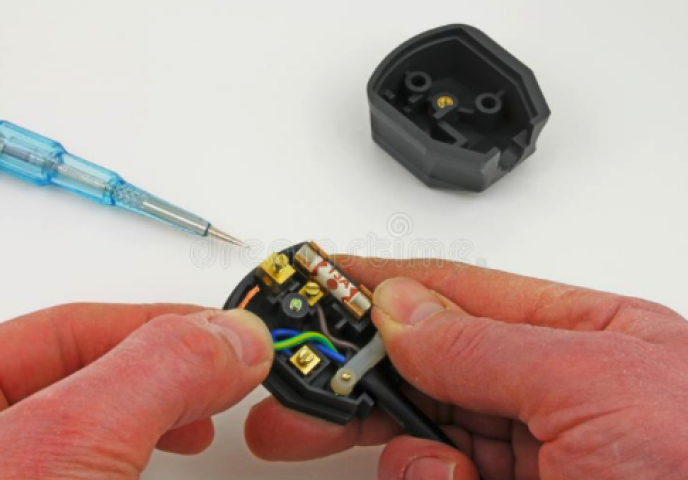IEC 60884-1
Plugs and socket-outlets for household and similar purposes – Part 1: General requirements
IEC 60884-1 standard covers LVD test of fixed and mobile sockets, which are intended to be used inside or outside the building, with or without grounding contacts, with rated voltage between 50 V and 442 V, with rated current not exceeding 32 A, operating with alternating current only.
As LVT Test Laboratories, We carry out LVD tests within the scope of IEC 60884-1 standard in our laboratory accredited by TÜRKAK.
For IEC 60884-1 standard, we carry out the following safety tests (LVD Test) accredited;
1) Marking
1.1) Accessories (plugs or sockets) should be marked as follows:
- Declared current, in amperes,
- Declared voltage, in volts,
- Symbol of the type of feed source,
- Name, trade mark or identification mark of the manufacturer or authorized dealer,
- Type reference, which can also be a catalog number,
- The first characteristic number of the degree of protection against entry of solid foreign objects and access to dangerous parts; If the declared number is greater than 2, then the second number should also be marked.
- The second characteristic number of the degree of protection of water against damaging ingress; If the declared number is greater than 0, then the first number must also be marked.
1.2) Symbols should be as follows when used:
Ampere ………………………………………….........................................................................……… A
Volt ……………………………………..........................................................................………..…….… V
Alternate current ………………….............................................................................…....……… ∼
Neutral …………………………………………........................................................................………… N
Protective earthing ….....................................................……………………………….....………….. PE
Degree of protection........... …………….............................................................................. IPXX
2) Protection against electric shock
After the sockets are assembled, after plugs are completely plugged into the socket, they must be manufactured in such a way as to have sufficient protection against random contact with their tensioned sections and be enclosed in the housing. Compliance with this rule is checked by applying force to the openings of the accessories with the articulated finger.
3) Provision for earthing
3.1) Accessories with earthing contact, plug, earthing connection when plugged into the socket; The plug should be made in such a way that the current-carrying contacts are provided before the voltage goes under voltage. When removing the plug from the socket, current carrying contact rods must be disconnected before disconnecting the ground.
3.2) The resistance of the connection between the earthing connector and the accessible metal sections that must be connected to it must not exceed 0.05 Ω. Compliance with this rule is checked by applying 25 A between the earthing connector and the accessible metal section.
4) Resistance to ageing, protection provided by enclosures, and resistance to humidity
4.1) Ageing
Accessories are installed as they are in normal use. Then it is kept in the oven at 70 ° C ± 2 ° C for 168 hours. After this procedure, the test samples are removed from the oven and kept at room temperature and relative humidity of at least 45% to 55% for 96 hours. in the sample;
- There should be no cracks when viewed with normal eyes and there should be no damage to comply with this standard,
- When pressed on the sample with a 5 N force with a dry and coarse woven fabric wrapped around the index finger, there should be no traces of fabric on the sample, the sample material should not stick to the cloth.
4.2)Enclosure Protection
The enclosures must provide protection against access to hazardous areas, against the damaging effects of solid foreign bodies and the damaging entrance of water, in accordance with the IP display of the accessory. Compliance with this rule is carried out according to the EN 60529 standard.
4.3) Neme Karşı Dayanıklılık
Deney numuneleri hava sıcaklığı 20°C ile 30°C arasında bağıl nemi % 91 ile % 95 arasında tutulan nem kabini içerisinde IP kodu IPX0 ise 48 saat, IP kodu IPX0’dan büyük ise 168 saat tutulur. Ardından numuneye Madde 5’teki deneyler uygulanır.
5) Insulation resistance and electric strength
5.1) Insulation resistance in sockets is measured in order from the following.
a) Between all the poles connected to each other and the body. Measurement is done with a plug attached.
b) Among others, connected to the body with the plug attached to each pole in turn.
c) Between all metal housings and thin metal sheets in contact with the inner surface of the insulating coatings, if any.
d) Between all metal parts of the cord fixings of mobile sockets, including clamping screws, and the grounding terminal (s) (if any) or grounding contact (s), if any.
e) Between all the metal parts of the cord fixings of the mobile sockets and the largest diameter of the flexible cable, and the metal rod installed in its place.
Insulation resistance in plugs is measured in sequence as follows.
a) Between all the poles connected to each other and the body,
b) Among the others connected to the body in turn with each pole,
c) Between all metal parts of the cord fixings including clamping screws and the grounding terminal (s) (if any) or grounding contact (s), if any,
d) Between all metal sections of the lanyard fasteners and the largest diameter of the flexible cable, between the same diameter and the metal bar installed in its place.
Resistance is measured by applying 500 V DC voltage between specified sections. The measured resistance should be more than 5M.
5.2) Among the parts of the test sample in 5.1.
- 1250 V for accessories up to 130 V (included) rated voltage,
- 2000 V AC voltage is applied for accessories whose rated voltage exceeds 130 V.
There should be no jumping and puncture during the test.
6) Temperature rise
In case the accessories whose conductor connection cannot be made again are delivered, the accessories whose conductor connection can be reconnected are taken into the test by installing polyvinylchloride insulated conductors with a nominal cross section.
Accessories are put into the test by assembling as normal assembly. Then, according to the sample properties, the test current specified in the standard is passed over the accessory for 1 hour and the contacts on the sample etc. temperature rise of the parts is measured with thermocouples. The measured value should not exceed 45K.
7) Breaking capacity
The breaking capacity of the accessories should be sufficient. Compliance with this rule is checked by passing the plugs into the sockets while removing voltage and current from the contact ends of the accessories.
The test voltage is 1.1 times the rated voltage and the test current is 1.25 times the rated current.
The plug is inserted and removed 50 times (100 insertion or removal) into the outlet with the following speed;
- 30 insertion or removal per minute for accessories with rated current up to 16 A (included) and rated voltage up to 250 V (included),
- 15 remove for other accessories per minute.
No damaging arc should occur during the test. After the test, there should be no damage to the samples, which will prevent their reuse, and there should be no damage in the spaces where the contact rods will enter, which could reduce safety in terms of this standard.
8) Mechanical strength
Depending on the features of the accessories, mechanical impacts are applied to the casings of the accessories with the appropriate test equipment in the standard. After the test, damage should not be seen that would compromise the standard.
9) Resistance to heat
9.1) Mobile accessories, fixed sockets (100 ± 2)°C are kept in the oven for 1 hour at temperature. After the test, the samples are left to cool at room temperature. The energetic parts should not be contacted with the articulated finger. Markings should be visible.
9.2) Plastic parts of mobile accessories that contact the energetic parts of the fixed sockets are placed in the oven at a temperature of (125 ± 2) ° C. A ball of at least 3 mm thickness is pressed on the sample with a force of 20 N. The sample is removed from the oven after 1 hour. It is immersed in cold water to cool down within 10 seconds. Then the trace formed by the ball is measured. The measured track diameter must be less than 2 mm.
10) Creepage distance, clearances and distances through sealing compound
The insulation ranges and superficial leakage path lengths of the different polarized energy conductors in the devices should be at a distance suitable for the operating voltage. The suitability is measured using tools such as calipers and gauges.
11) Provision for earthing
The resistance value between the accessible metal enclosures of the devices and the earthing tip must be under 0.1 Ω. The resistance value is calculated from the voltage drop by applying 25 A current between the metal housing and the grounding tip.
12) Screws and Connections
The screws used in joining the parts of the devices and electrical connections must be resistant to mechanical forces. Suitability is tested by tightening and loosening the screws at the moments given in the standard according to the thread diameters.
13) Resistance of insulating material to abnomal heat, to fire and to tracking
The outer sections of the non-metallic material, the sections made of insulating material that support the energetic sections, including connections, must be heat resistant. In order to verify compliance, the glow wire test and needle flame test are performed at the values specified in the standard.
14) Resistance to rusting
Iron sections containing covers and surface mounting frames must be sufficiently protected against corrosion. Compliance with this rule is confirmed by the following test:
All oils in the sections to be tried; It is removed using a suitable degreaser.
The sections are then immersed in 10% solution of ammonium chloride in water at (20 ± 5) ° C for 10 minutes. After the sections are dried, only after the drops are shaken, they are kept for 10 minutes in a box containing humidity saturated air at (20 ± 5) ° C. After drying the pieces for 10 minutes in an oven at (100 ± 5) ° C, no rust marks should be seen on their surfaces.

